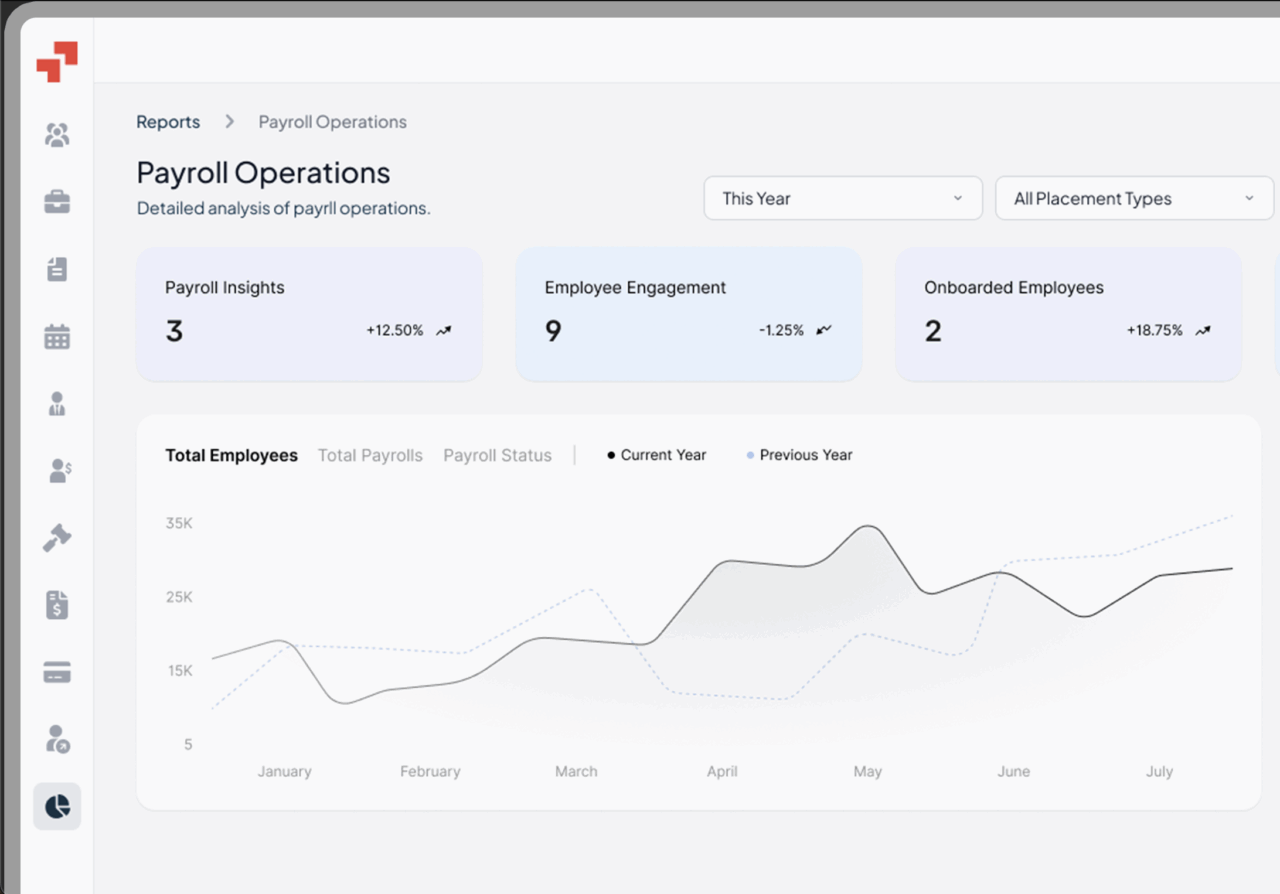Global Workforce GlossaryRelocation Package
Related Terms
Global Mobility
Expatriate Compensation
Secondment
Per Diem
Employee Transfer
In the post-pandemic era of borderless work, relocation packages have evolved from HR perks into strategic levers. In today’s competitive job market, these packages have become essential tools for attracting and retaining top talent.
For decision-makers, they represent a measurable investment in mobility, productivity, and retention, bridging global opportunity with local compliance.
Table of Contents
- What is co-employment?
- What are co-employment laws?
- Why is co-employment a risk?
- What are co-employment rules
- Co-employment do’s and don’ts
- How does co-employment work?
- What is the difference between co-employment and joint employment?
- Co-employment vs PEO
- Co-employment vs employee leasing
- Is co-op considered a full-time employee?
- Is it illegal to work for two jobs in the same industry?
- Co-employment examples
- Practical Case Study Example
- PamGro and Co-employment: Your Global Partner
What is an employee relocation package?
A job relocation package is an employer-funded framework that covers the financial and logistical costs of moving an employee for work.
A relocation allowance is a fixed sum provided upfront to employees to cover moving expenses, which they can manage at their discretion.
It may include transport, housing, and visa support. In the U.S., the IRS classifies certain relocation benefits, such as lump sum payments or relocation allowances, as taxable income, while HMRC and EU guidelines treat them as employer-provided benefits subject to regional tax and reporting requirements.
How does a relocation package work?
A lump sum package is a fixed monetary allowance given to employees to independently cover relocation expenses. Lump sum payments are a flexible benefit for employees, offering convenience and adaptability in managing their move.
Relocation reimbursement involves employees paying for moving expenses first and then being repaid by the employer after submitting documentation. A company’s relocation policy outlines how expenses are managed, reimbursed, or funded, including the use of lump sum payments or itemised reimbursements.
Most U.S. firms use structured policies with pre-approved caps, while EU and UK employers often align relocation programs with mobility compliance audits to meet reporting and social contribution standards. A structured relocation program helps track costs and ensure compliance.
When should a relocation package be offered?
A relocation package should be offered when hiring across regions, relocating leadership, or filling roles in talent-scarce markets. Companies typically provide relocation packages in these situations to attract top talent and support smooth transitions. Early inclusion in the offer letter signals intent and builds candidate confidence.
Most companies synchronise relocation policies to ensure consistency and compliance. For multinationals, synchronising relocation policies across jurisdictions minimises tax exposure and ensures a consistent employee experience.
What does a typical relocation package include?
Many relocation packages include professional packing, storage, and comprehensive support services. Key components of a standard relocation package often include temporary accommodation, home sale assistance, and house hunting trips. A good relocation package provides comprehensive support, including spousal employment assistance, spousal job support, and family assistance. A solid relocation package helps cover moving costs, moving expenses, and miscellaneous expenses, supporting a smooth transition to a new location or new city.
Relocation expenses can include storage fees, temporary storage, and actual costs incurred during the move. Home selling assistance and home sale assistance are often provided to support employees with their existing residences. Moving services, unpacking services, and the transportation of the employee’s household goods are typically included. Paid trips, such as house hunting trips, and cultural training are offered to support employees and their families. Financial assistance, travel costs, and mileage reimbursement are provided to offset the financial burden of relocation.
Early lease termination fees and offsetting tax liabilities are also considered in comprehensive employee relocation packages. Employee satisfaction, employee well being, and a smoother transition for relocating employees and relocated employees are key goals of these packages. Employee relocation packages are designed to support both the employee’s relocation and the company’s objectives.
How to ask for a relocation package?
Employees should approach the discussion factually prepare an itemized cost estimate, demonstrate business alignment, and propose a structured timeline. It’s advisable to formalize discussions through HR rather than ad hoc negotiation. Clarity on tax implications, reporting requirements, and repayment clauses ensures mutual understanding before contract finalization.
Can you negotiate a relocation package?
Yes. Relocation packages are negotiable, particularly at senior or cross-border levels. Commonly negotiated items include extended housing, family support, and one-way flight upgrades. In the UK, HMRC allows up to £8,000 in tax-exempt relocation benefits, often used as a negotiation anchor. Employers balance generosity with equity across internal mobility tiers.
How much is the average relocation package worth?
According to the Worldwide ERC, U.S. domestic relocation costs average between $20,000 and $97,000, while international assignments can exceed $100,000.
In Europe, relocation packages generally range from €15,000 to €40,000, reflecting shorter travel distances and the presence of government-supported mobility programs.
Strategic employers evaluate ROI not only by upfront expenditure but through retention rates, employee satisfaction, and time-to-productivity benchmarks, ensuring long-term value from relocation investments.
What are the different types of relocation packages?
- Lump Sum: Fixed cash allowance; flexible but low oversight.
- Reimbursement: Employee pays, then submits receipts.
- Managed/Direct Billing: Employer partners with vendors and pays directly.
- Tiered Models: Packages vary by role and seniority.
Modern firms increasingly combine these offering lump sums for flexibility and managed services for compliance assurance.
What are the costs involved in employee relocation?
Key expenses include moving goods, temporary housing, visa fees, travel, and family support.
Hidden costs currency shifts, property lease penalties, and tax gross-ups can add 15–25% to total spend. U.S. and UK tax authorities require detailed documentation of all reimbursements for accurate year-end reporting and audit readiness.
What are the challenges of international relocation?
Global relocations face immigration delays, dual-taxation risks, and compliance complexity. EU mobility laws require host-country social security alignment, while U.S. relocations often face state-level tax variations.
Beyond compliance, family adaptation and cultural integration determine long-term retention, prompting many employers to invest in post-move support.
What are the best practices for designing an employee relocation package?
Establish clear eligibility tiers, document reimbursable items, and ensure tax-efficient structuring. Benchmarking against SHRM or PwC Mobility data helps standardise costs. Include repayment terms for early departures and track ROI through onboarding speed and retention.
Sustainability is also emerging as a best practice, with many EU companies opting for eco-certified movers.
Example
A San Francisco-based biotech firm relocating a senior data scientist to Amsterdam offers a hybrid package: $35,000 lump sum for discretionary spending, direct billing for international movers, 60 days of temporary housing, and spouse visa sponsorship.
Total cost: $60,000. Within six months, the employee achieves full productivity, validating ROI. The company integrates policy tracking to align future relocations with EU tax and sustainability guidelines.
FAQs
What should be included in a relocation policy?
A policy should define eligibility, covered expenses, approval workflow, repayment clauses, and tax treatment. Leading employers also document vendor partnerships, expense caps, and compliance procedures across jurisdictions.
What hidden or additional relocation costs should employers consider?
Hidden costs often include interim housing extensions, vehicle import duties, family schooling, exchange-rate losses, and local taxation. A 2024 Mercer study found these can inflate relocation budgets by up to 22% if untracked.
What are the potential drawbacks of offering relocation packages?
High upfront cost, administrative overhead, and potential resentment among non-relocated staff. Poorly designed programs risk tax non-compliance or employee attrition if expectations aren’t managed transparently.
Are relocation packages taxable?
Yes, in most cases. The IRS classifies relocation benefits as taxable income unless they qualify under narrow exemptions. HMRC allows limited tax relief up to £8,000, while EU taxation varies by member state, generally treating relocation support as a benefit in kind.
What is a good lump-sum relocation package?
A competitive lump sum typically ranges between $10,000 and $30,000 for mid-level employees and between $40,000 and $70,000 for executives. The amount should reflect regional cost differentials, family size, and company policy tiers.
Hire the Best Talent, Anywhere






